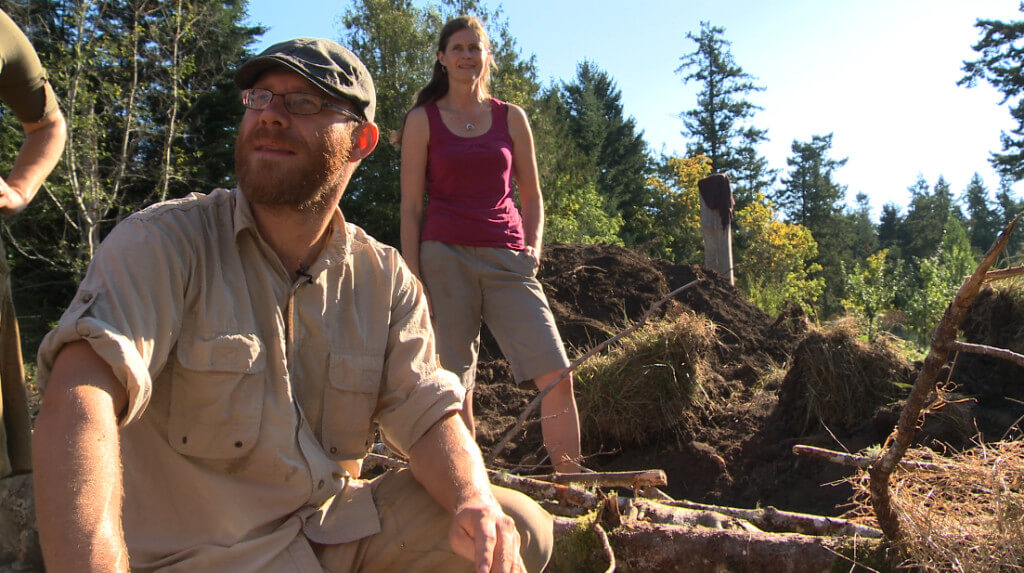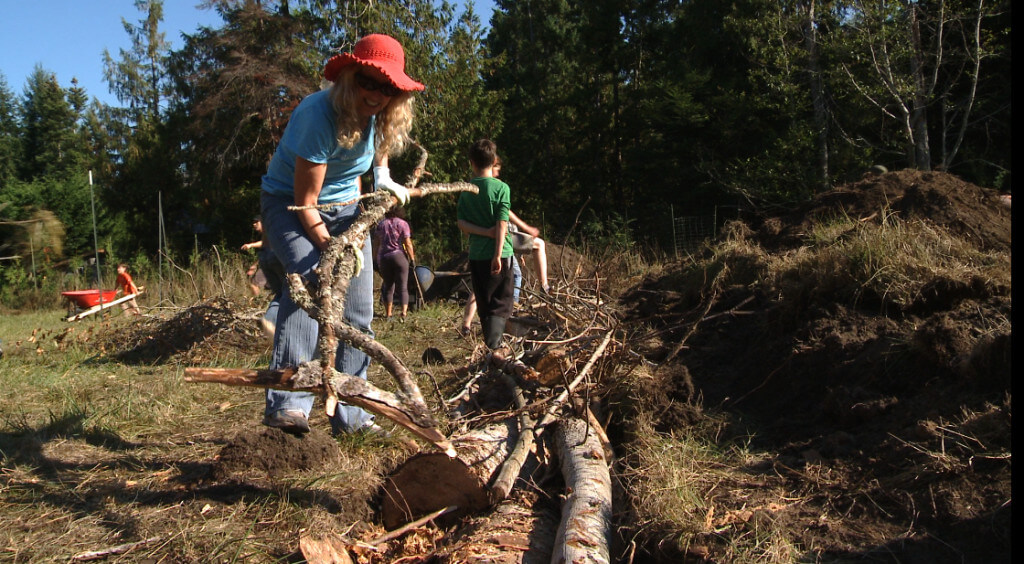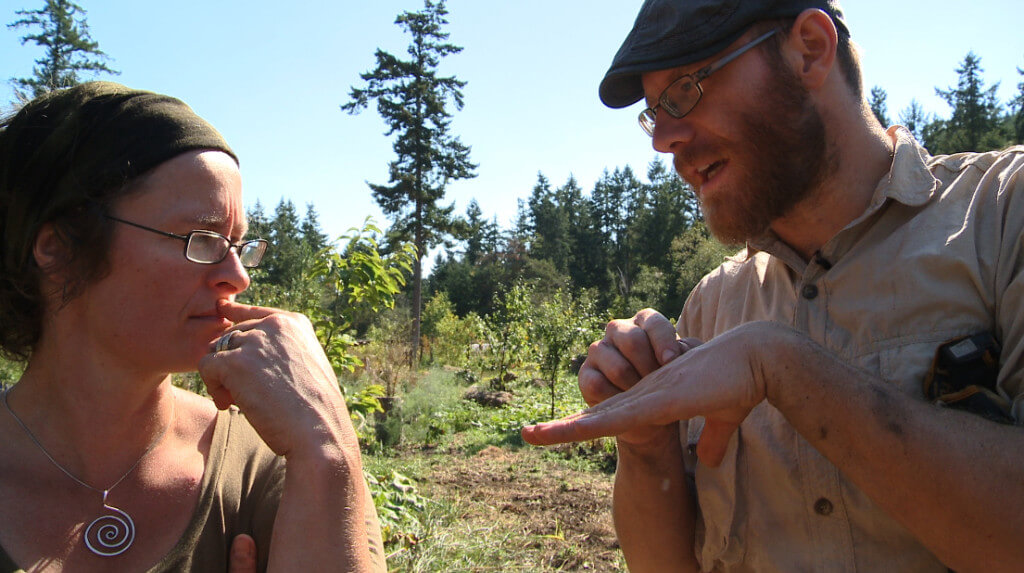Farm Scale Hugelkultur
A simple technique at farm scale helps a cooperative of farmers boost their productivity.
Overview
What is hugelkultur?
Hugelkultur is a German technique where wood is buried in trenches and mounded with dirt up to 2 m tall. As the pile decomposes, the wood becomes a sponge for soil life and retains more moisture. This method of growing allows for less watering and robust vegetation growth.
The site is several acres of bottom lowland, mostly flat with a slight bowl and northward aspect, and had been unused or lightly grazed for 10-12 years. Like other local islands, Gabriola has a transient population, some unemployment, and high food prices; local farms are few and far between.
After arranging a lease agreement for Watercliffe Farm a few years prior, the clients were developing the land as a demonstration site to produce food while inspiring and educating Gabriola Island residents and visitors. Two young couples with children, they were earning their primary income from CSA, farmgate and farmer’s market sales, but doing everything themselves, including raising kids and working additional jobs. They wanted to differentiate their products, which could also attract other people interested in innovative farming methods.
Background and Challenges
Since beginning at Watercliffe, the clients had been very well received within the community, gaining support and a great track record in hugelkultur, in addition to experimenting with fungal cultivation, new varieties, and cover crops. Their major challenge was that the site was so heavily waterlogged that up to 2 months into the growing season they still couldn’t be working on the land. After having tried small-scale hugelkultur at ground-level on half of the land, with standard beds on the remaining half, they found that on the hugelkultur portion they could be working months earlier, required irrigation months later (1-2 mos), and were productive later into the season.
Key Points
- Athabasca University provided support for a design of a large-scale, long-term hugelkultur acting as a carbon sink, windblock, frost pocket deflector, and to define the property boundary
- Hugelkultur 45-50 ft long, 5 ft tall, 4 ½ ft wide; used dead and decomposing wood on site with soil amendments for additional nutrients, particularly nitrogen
- Installation as workshop and community building activity
- Most extreme section of the property, otherwise unusable, was put into production; additional services as windbreak, suntrap, and air drainage to avoid frost pocketing
More projects
Overflow Raingarden
A raingarden offers the solution to a parking lot’s water overflow problem.
Darfield Earthship Edible Landscape
An earthship gets a thriving edible landscape and shelter from cold winter winds.
Water Plan and Animal Movement
This heritage poultry farm couple came to assess their water situation with many areas bei… Read more »
Regenerative Rehabilitation Farm Design
A 136ac farm design for a rehabilitation center focused on regenerative agriculture, water… Read more »
Topographical Site Survey – Homestead
A topographical survey produced by taking ground survey points, ground control points as w… Read more »
Farm Scale Hugelkultur
A simple technique at farm scale helps a cooperative of farmers boost their productivity.








